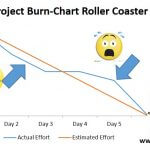Following on from Choosing between Waterfall and Agile project management. This post will focus on an overview of agile project management.
What is Agile project management?
Agile project management is a modern method of project management characterised by its speed and flexibility. It defines, tests and releases the deliverables in small bursts, known as ‘sprints’, refining the project until it meets the customer’s requirements.
Phases of the Agile method
Different Agile frameworks can be used, Scrum and Kanban being some of the most common; however, they all follow the same basic principles.
Project planning
The end goal, and how it will be achieved, should be understood by all members of the team. Although the benefit of this method is that changes can be made easily, the overall scope of the project should remain the same.
Product Roadmap Creation
This stage is a vital aspect of the planning process, where product requirements are identified and a rough plan of when those requirements will be developed is drawn up. A product backlog will then be delivered, listing the features and deliverables that will make up the final product, and assisting sprint planning.
Release planning
Features of the product are released at the end of each sprint, with high-priority features generally being the first to launch. The project manager must therefore create a timetable for releases, which will be revisited and reassessed at the beginning of each sprint.
Sprint planning
The Agile methodology was designed with multidisciplinary teams in mind. In advance of each sprint you should identify what each team member will achieve and spread the workload evenly so that everyone can complete their assigned tasks by the end of the sprint.
Daily meetings
Daily meetings should be short, no longer than 15 minutes, and will allow each team members to briefly explain what they have achieve the previous day and what they will complete on this day. These meetings should not be used to problem solve or talk about general news. A top tip to keep them short is to hold them standing up.
Sprint review and retrospective
The final stage of the sprint involves a review with the customer to show them the product, and an internal meeting to review the sprint, and identify what went well, what can be improved in the next sprint, and how the team managed their workloads.
Advantages
A higher degree of collaboration between the team and the customer increases customer satisfaction. The continuous feedback loops allow changes to be made to refine future sprints and produce a higher quality product.
Testing deliverables at the end of each sprint reduces risk, avoiding total project failure. The project manager will know quickly whether a product will fail or succeed.
Product control and predictability is increased thanks to regular inspection and equal sprint lengths. Using short sprints makes projects more manageable and increases productivity.
Agile’s short sprints mean that businesses can stay ahead of the competition by having the end product ready for market faster, giving a higher return on investment.
Disadvantages
Experienced team members are needed as information isn’t methodically documented. This can make it hard for new members to join the team and get up to speed.
The constant interaction needed with the customer and within the team requires more time and energy.
The continuous feedback loops and lack of clear planning at the beginning mean that the project deadline can stretch out, with no clear end date.
Each team member completing their individual part of the sprint can lead to fragmented output.
The team won’t know how the end result will look, which makes it difficult to plan the cost, time and resources needed.
Should you use the Agile method for your project?
The Agile method works well when you have limited information up-front, your end goals are unclear and when you need to complete a project quickly.
The business environment is faster paced than ever before. If you are under pressure to deliver a project that is guaranteed to meet the customer’s requirements without wasting time and finances, and you have an experienced team, then Agile will most likely be the most effective method to follow.






